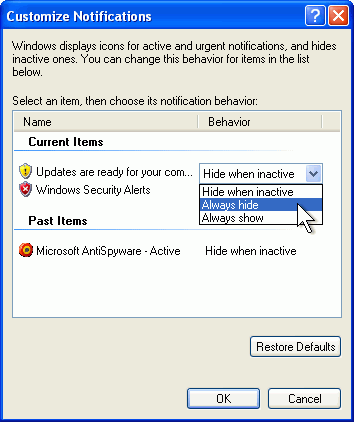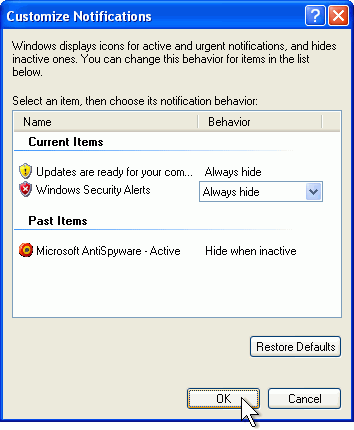How to Remove Windows XP’s Messenger
Theoretically, you can get rid of it (as well as a few other things). Windows 2000 power users should already be familiar with this tweak.Fire up the Windows Explorer and navigate your way to the %SYSTEMROOT% \ INF folder. What the heck is that thingy with the percentage signs? It’s a variable. For most people, %SYSTEMROOT% is C:\Windows. For others, it may be E:\WinXP. Get it? Okay, on with the hack! In the INF folder, open sysoc.inf (but not before making a BACKUP copy first). Before your eyes glaze over, look for the line containing “msmsgs” in it. Near the end of that particular line, you’ll notice that the word “hide” is not so hidden. Go ahead and delete “hide” (so that the flanking commas are left sitting next to one another). Save the file and close it. Now, open the Add and Remove Programs applet in the Control Panel. Click the Add / Remove Windows Components icon. You should see “Windows Messenger” in that list. Remove the checkmark from its box, and you should be set. NOTE: there are other hidden system components in that sysoc.inf file, too. Remove “hide” and the subsequent programs at your own risk.
Set the Search Screen to the Classic Look
When I first saw the default search pane in Windows XP, my instinct was to return it to its classic look; that puppy had to go. Of course, I later discovered that a doggie door is built into the applet. Click “Change preferences” then “Without an animated screen character.” If you’d rather give it a bare-bones “Windows 2000” look and feel, fire up your Registry editor and navigate to:
HKEY_CURRENT_USER \ Software \ Microsoft \ Windows \ CurrentVersion \ Explorer \ CabinetState. You may need to create a new string value labeled “Use Search Asst” and set it to “no”.
How to Upgrade Windows 98 or Windows Millennium Edition Profiles to Windows XP Domain User Profiles
This guide describes how to upgrade a Microsoft Microsoft Windows 98-based, or Microsoft Windows Millennium Edition-based client that has user profiles to a Microsoft Windows XP-based client.
The following steps enable the Windows 98 and Windows Millennium Edition (Me) profiles to be retained throughout the process.Your best method to retain the profiles is to join the domain during the upgrade installation process.
Otherwise, you must use a workaround method to transfer the profile information over to the Windows XP profile.During the upgrade installation process, at the networking section, the administrator is offered the choice to join a domain or a workgroup.
If you join the domain at this juncture, you ensure that all the existing profiles are migrated successfully to the Windows XP-based installation.
If you did not join the computer to the domain during the upgrade process, you must use the following workaround method:
Join the upgraded computer to the target domain.
All applicable users must log on and log off (which generates a profile).
Copy the appropriate Application Data folder from the Windows 95, Windows 98, and Windows Me profiles to the newly created user profiles.
How to make your Desktop Icons Transparent
Go to ontrol Panel > System, > Advanced > Performance area > Settings button Visual Effects tab “Use drop shadows for icon labels on the Desktop”
Speed up your browsing of Windows 2000 & XP machines
Here’s a great tip to speed up your browsing of Windows XP machines. Its actually a fix to a bug installed as default in Windows 2000 that scans shared files for Scheduled Tasks. And it turns out that you can experience a delay as long as 30 seconds when you try to view shared files across a network because Windows 2000 is using the extra time to search the remote computer for any Scheduled Tasks. Note that though the fix is originally intended for only those affected, Windows 2000 users will experience that the actual browsing speed of both the Internet & Windows Explorers improve significantly after applying it since it doesn’t search for Scheduled Tasks anymore. Here’s how :Open up the Registry and go to :HKEY_LOCAL_MACHINE/Software/Microsoft/Windows/Current Version/Explorer/RemoteComputer/NameSpaceUnder that branch, select the key :{D6277990-4C6A-11CF-8D87-00AA0060F5BF}
and delete it.
This is key that instructs Windows to search for Scheduled Tasks. If you like you may want to export the exact branch so that you can restore the key if necessary.
This fix is so effective that it doesn’t require a reboot and you can almost immediately determine yourself how much it speeds up your browsing processes.






 2.
2.
